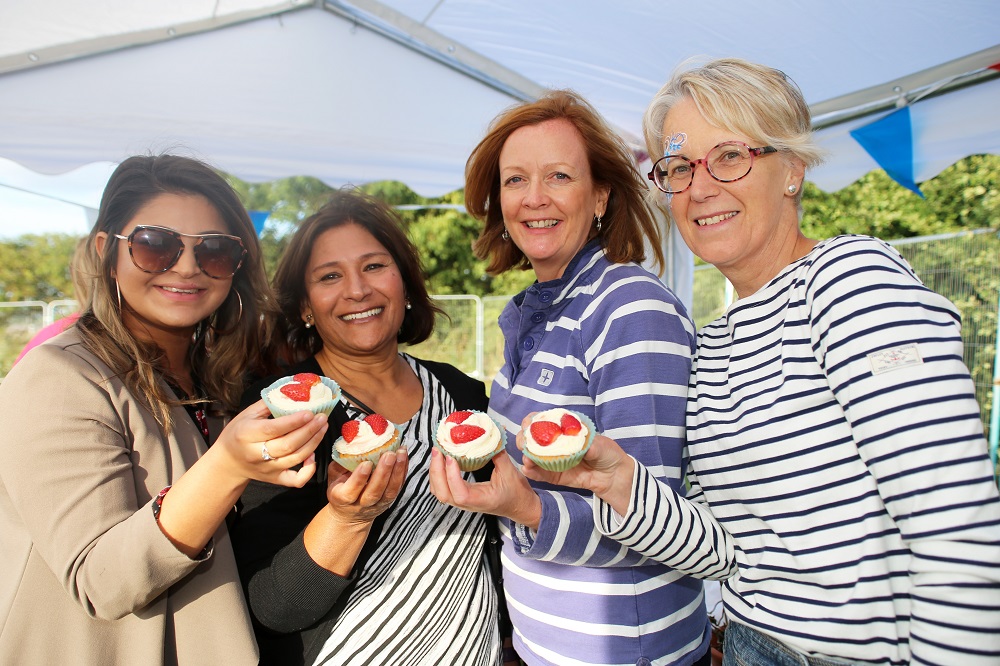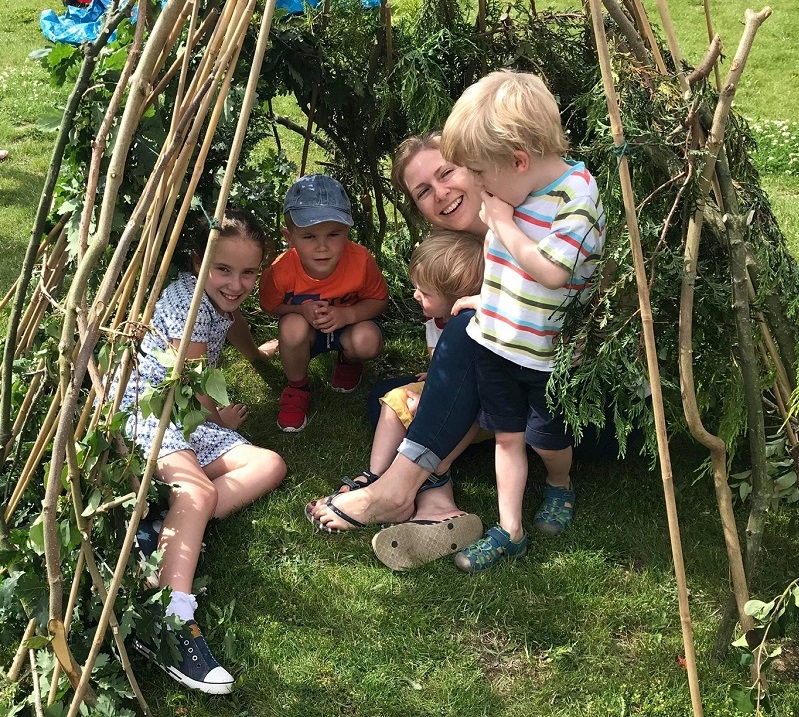CTE’s Principal Officer for Mission and Evangelism, Rev Dr Ben Aldous reflects on the development of a community and church in New Lubbesthorpe in Leicestershire:
Part of my role at CTE is to act as secretary to the Churches Group for New Housing Areas. It’s a group that has been in existence for around 15 years and is charged with bringing churches together to consider how best to reach those moving onto the growing communities of new housing across the country.
The truth is, when churches come together to do this kind of thing it’s not straightforward. At times there can be miscommunication, unmet expectations and a sense that what was embarked upon ended in failure. But there are also really wonderful, missional, flexible, creative and incarnational approaches to being and developing church on new housing estates.
Before lockdown and the ‘new normal’ of zooming and immobility, I visited one such project and met its coordinator, Sue Steer. The construction of New Lubbesthorpe, to the West of Leicester and not far from the M1, began in April 2014 but the story begins long before that…
Foundations of prayer
Back in March 2008 a planning application was submitted to the local (Blaby) district council to build 4,250 homes. Six years later, as plans were being approved, Churches Together in Leicestershire (CTL) approached the council expressing an interest, if the development went ahead, to assist them in ‘building community.’ And in early 2015 CTL and Blaby District council met to consult and think about what healthy community might look like.
At the same time a regular ecumenical prayer group was established which met in and around Lubbesthorpe. It’s a reminder that this work was first established in prayer and that’s a vital part of the Fresh Expressions journey. Before the ground was broken, other seeds were being sown.
Make expectations clear

By September 2016, Sue Steer had joined the project. Sue is a Baptist minister with a pioneer* gift, experience and training. Funding for her CTL part-time post came and still comes from the Church of England, Baptists (via the Home mission fund), the URC and Methodists.
Because of Sue’s previous experience, she realised it was necessary to set out some expectations about what would be achieved. When she started, she was clear that her first job was to build community; the second priority was to help build church.
Initially her stakeholders were aligned with this vision. However, about three years later, when new members joined the management group, some questions were raised as to why Sue hadn’t started ‘a church’ yet. The new members were more familiar with traditional church planting models (rather than, for example, following the fresh expressions journey). Working together these tensions were quickly resolved and the open mindedness endured.
As I read through Sue’s newsletters and blog, I was struck that in the early days she really listened to a whole variety of people. From shop owners in Kirby Muxloe, who worried that the changes in road networks would diminish their business, to local farmers who were staying in the area but were set to see the landscape they had known well utterly changed.
She reflects in an early newsletter that she was initially, ‘Getting to know the builders, the sales teams, the council, some of the local farming community and the people living and serving the surrounding communities.’ But she was also aware of the notion of being a ‘guest’ rather than a host in the emerging space of the new community.
Sue, being unafraid to inhabit the role of guest, was key in those early days. She reflects that this is in line with the kind of posture Jesus expected his disciples to take when they are sent out in Luke 10.
That posture of listening and asking what the community needed has continued. In June 2019, Sue organised ‘a listening week’ with drop-in sessions allowing residents the opportunity to comment on how the community was developing. That exercise will be repeated in the coming weeks post-Covid-19.
Sue, as a pioneer, knew it was important to build a good support system especially in the early days. She visited local churches looking for people with a pioneering heart to join her in a Lubbesthorpe Action Group. Her Development Team were people who could help out practically with events and activities and were happy to learn from each other and their experiences. They hosted ‘meet your neighbour’ events as Sue and the team personally welcomed everyone who moved into the estate. In July 2017 there were residents in 18 houses; today about 400 houses are occupied.

The word became flesh…
By December 2017 a smart new cabin had arrived (funded by the developers). This allowed Sue to be much more noticeably physically present in the community and to be able to create a space for people to gather.
The Hub developed as a place for coffee mornings, drop-ins, a book club and toddler groups. It also hosted Radio Leicester’s Sing Christmas, which felt like a significant step towards developing the community.
The Hub now moved to a new position next to the Primary School and their space has expanded into one of the classrooms.
That extra room and adjacent play space outside are very welcome as physical-distancing measures become the norm.
‘Adapting to the new context, that’s what this whole pioneering thing is about,” reflects Sue as she starts to talk to the community about what #BuildBackBetter might look like in New Lubbesthorpe. ‘Luckily, I do enjoy change. I’m a firestarter!’
Another key relationship for Sue has been with the land agent, the Drummond Estate. From the start they have been committed to seeing a healthy community form and thrive; not to just making a quick buck. In 2019 the project received the LGC Best Housing Initiative Award, which is a national award for local government.
Through a regular financial contribution the Drummond Estate offers ongoing support to the social enterprise (a Community Interest Company or CIC) which Sue is developing. A CIC is less rigid than a charity, allowing flexibility to adapt to the needs of the new residents. Up to 15 new households move in every month. As the CIC grows Sue can possibly be freed up to focus on the formation of church.
Church taking shape

Along the way Sue has built a small community who are committed to being disciples. Some are still involved in their local churches and, whilst fully signed up to something emerging in the estate, aren’t quite ready to leave inherited church yet. Sue reflected that the transition from inherited church to a new expression of church takes time. Grace to make that move is key.
The ecumenical dimension is a key part of the New Lubbesthorpe story. Sue remarked, “if we can’t learn to work across our denominations, how the heck are we going to work in our ethnic diversity?” About a quarter of the residents of the area are from a Black, Asian or Minority Ethnic background.
Sue is committed to ecumenical working. Her own spiritual director is a Roman Catholic, who has given her great personal support and the opportunity to talk through challenges along the way.
Church is taking shape based around themes of wellbeing, food and enjoying the outdoors, with a fantastic looking Mossy Church.
Areas of ecumenical experimentation
As I listened to the story of New Lubbesthorpe and spoke with colleagues from CTE, I became aware that this idea of creating ecumenical experiments on new housing areas has historical precedence.
In a fascinating and well-worked paper Telling the Story, David Hawtin and Roger Paul trace the history of Local Ecumenical Partnerships (LEPs). Before LEPs were a thing, the British Council of Churches Faith and Order consultation in Nottingham in 1964 came up with the idea of an “Area of Ecumenical Experiment” (an AEE).
As Hawtin and Paul write, ‘the first major direction was to give approval to setting up locally ‘areas of ecumenical experiment’. In giving its stamp of approval, the Nottingham Conference indicated how the unity of the church could be expressed at the local level. ‘One of the challenges for the churches in post-war Britain at this time was to do with mission to the new areas of housing development which were being planned and built around almost every major city. The proposed new towns were a particular challenge in this respect. Sometimes these plans only allowed space for one church site. There was a growing sense that in responding to this challenge the churches would be more effective if they were to work together.’
I wonder if we need a return to the language of experiment in our ecumenical endeavours in New Housing? The future in many ways at this juncture of the Covid-19 crisis looks uncertain. Ecumenical funding could be cut as churches reboot and make do with less. Some churches may choose to hunker down or retreat to lick their wounds. But a commitment to creativity and experimentation is absolutely necessary if we are going to see new contextual churches forming through the concrete of our new housing areas. We need people like Sue and her commitment to listen, love and serve.
This piece is adapted from the original blog “Sowing in concrete: Tales of Church taking shape in new housing areas – New Lubbesthorpe”.
*See the Church Mission Society for more information and definitions of pioneering ministry
Read more about how churches are engaging with new housing areas.